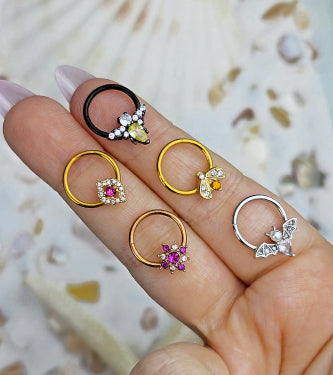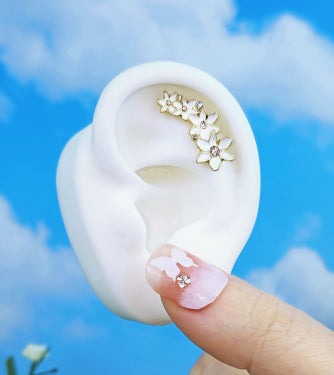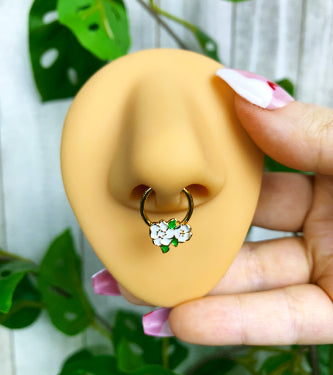
Q: I accidentally knocked my piercing and now it's bleeding. Should I take it out, leave it in, seek medical attention? Will it be fine? -Jaclyn O.
A: First of all, you can leave the piercing in. It’s injured, but there’s no reason to remove it at this point. You’ll want to baby it as much as possible while it’s healing. Even if it’s an older piercing, you’ll want to clean it with sterile saline spray twice a day, rinse with water, and dry with either a hair dryer or a clean paper towel. (And make sure your hands are clean!) Make sure you don’t sleep on it, play with it, or let hair or clothing snag it. And you may get an irritation bump, so don’t be surprised by that. Just continue to care for your piercing as if it were new and the bump should go away over time. Don’t try to remove any dried blood manually, just let the saline rinse it away. If the situation worsens or the piercing starts to show signs of rejection, you’ll want to take a trip to your trusted piercer for an evaluation. Best of luck!
Q: I'm getting my first piercing (minus my lobes) in a few weeks. Pick my piercing for me lol! Which ones hurt the least for a newbie? Thanks for your help! -Anonymous
A: It may be surprising but one of the piercings most commonly considered to be low on the pain scale is the tongue. While most piercings are through cartilage or skin, the tongue is a muscle and doesn’t have the same kind of nervous setup as other parts of the body. While accidentally biting the tip of your tongue can be super painful (Who hasn’t done that and regretted it??), a tongue piercing is more towards the center and the healing period feels more like a pulled muscle than a standard piercing, although the swelling can be a bit unpleasant. Another surprisingly painless piercing for many people is the septum. While this is a sensitive piece of tissue, the overall pain involved is generally considered to be low and the healing period to be relatively free of discomfort. The “sweet spot” in the septum is a spongy, less rigid form of cartilage that is less resistant than the cartilage found in the ear, making for a less painful pierce and faster healing. Happy piercing!
Disclaimer: Body Candy is only here to give you fun and helpful advice and information when it comes to getting pierced. Always consult a professional piercer to make sure a new piercing is right for you!











